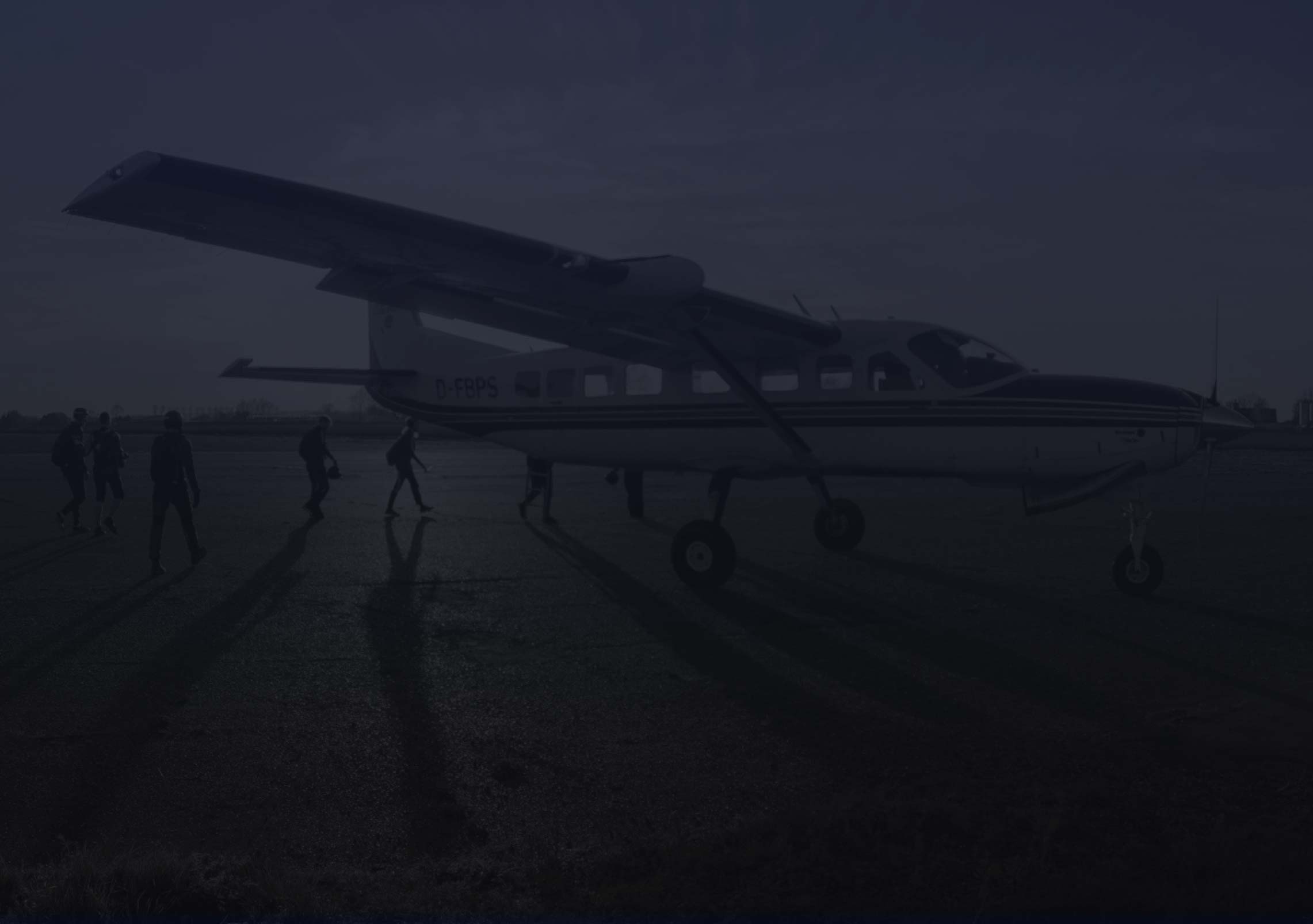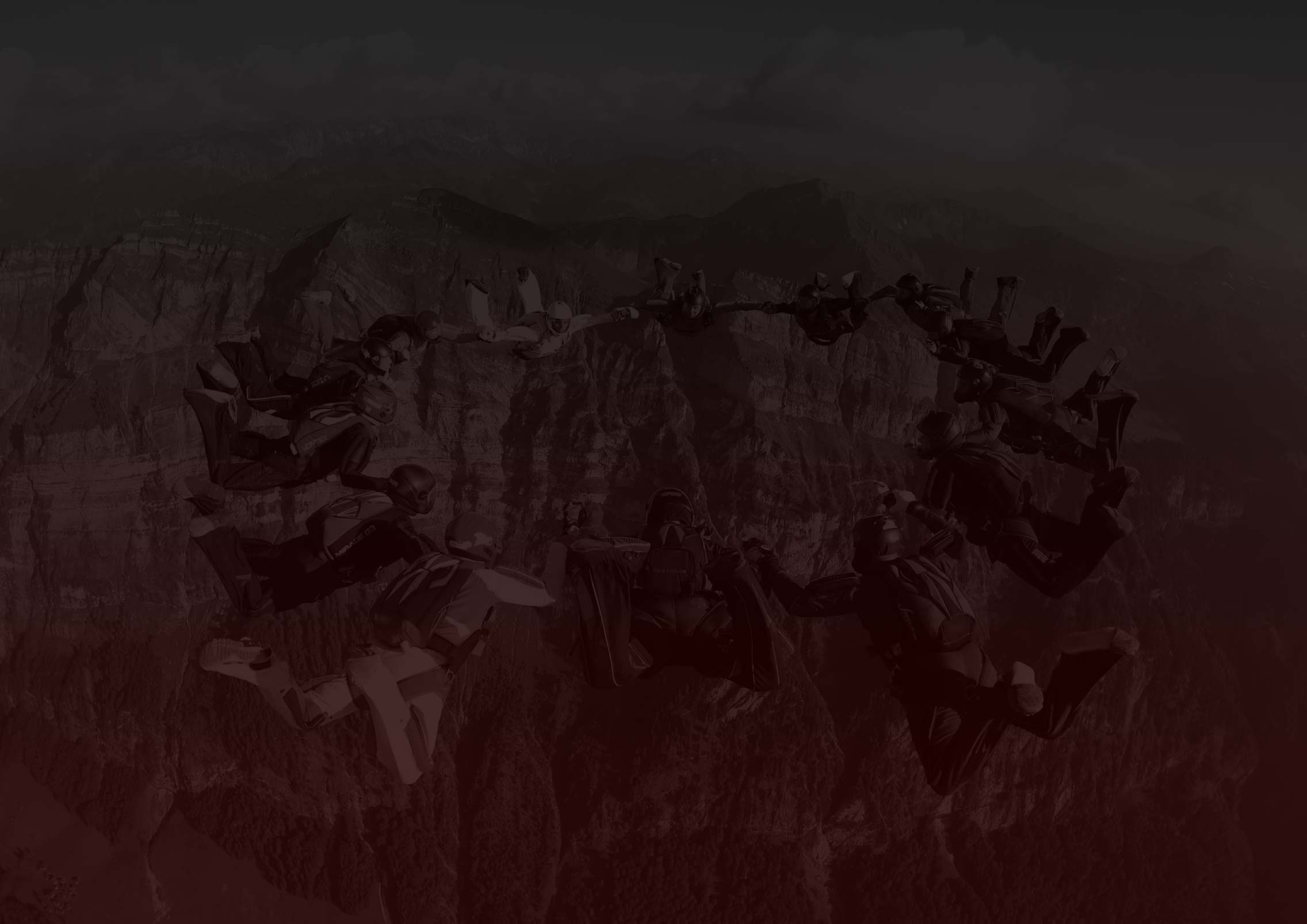Insurance is admittedly not be the most glamorous subject. But it is hugely important. So please take the time to read the information and advice below. We set out some key considerations, including when traveling to skydive outside the UK. Following this guidance could save you and yours a great deal of money, time and heartache.
Third party legal liability insurance & death and critical injury insurance:
Members’ third party legal liability insurance covers accidental harm you may cause to others by your skydiving, for instance by damaging their property through an off-landing.
Third party insurance cover is included in your British Skydiving Membership – the insurance premium forms part of the membership subscription you pay.
All of the policy documents can be downloaded below, for an in depth summary of the insurance.
Open/download Form 206 – Members’ insurance summary.
Open/download Members Public Liability Insurance Certificate
Open/download AXA XL IPID and Important Information – Members Cover – British Skydiving
Open/download British Parachute Personal Accident Summary of Benefits
The indemnity limit of the British Skydiving third party public liability insurance policy is £10m at British Skydiving Affiliated Parachute Training Organisations and £100,000 at overseas non-affiliated drop zones, excluding the USA where the policy does not apply. The policy does not provide cover for instructor negligence at non-affiliated drop zones.
Please note in particular that:
British Skydiving Members’ insurance includes a separate policy giving £15K death and critical injury cover (for members aged under 75 years) whilst undertaking a parachute jump from leaving the aircraft until such time the landing is complete in accordance with the British Skydiving Operations Manual supplemented by local Standard Operating Procedures, ie when jumping at British Skydiving Affiliated Parachute Training Organisations or on an organised and notified display by a British Skydiving-Registered Display Team. The death and critical insurance policy does NOT apply outside the UK except at the British Skydiving Affilated Parachute Training Organisations on British bases in Germany and Cyprus. A summary of this policy is included in the Members’ insurance summary document.
Insurance against harm to yourself when you are skydiving (or doing whatever else that a specific personal accident insurance policy may cover you). Apart from death and critical injury cover (see note above), personal accident insurance is NOT included in your membership – you need to take it out separately. Typically, a personal accident policy might cover you if you were off work recovering from an injury sustained in sport parachuting – say for example your work involves driving and you sustain a broken ankle that prevents you from working until it has healed.
If you’re jumping in the UK only, many UK Drop Zones may be able to provide information on companies that provide Personal Accident Insurance that covers UK jumping.
If you are thinking of jumping outside the UK, in the rest of the European Union or the rest of the world, personal accident insurance should include medical fees and repatriation cover to the UK in the event of a serious skydiving injury or any medical emergency. British Skydiving strongly recommends that Members should take out travel [personal accident / medical repatriation] insurance cover that is suitable for your own personal needs.
British Skydiving controls all aspects of skydiving on behalf of the Civil Aviation Authority (CAA). Prior to 1984, skydiving from an aircraft in flight was prohibited in the United Kingdom (other than in an emergency) and could be conducted only under the terms of exemptions from the Air Navigation Order. With the Air Navigation (Second Amendment) Order 1983, effective from 31 January 1984, parachuting became a permitted activity, subject to the grant by the CAA of a written permission, and in accordance with appropriate conditions specified in such CAA permission documents.
A comprehensive skydiving manual was required, incorporating various provisions relating to aircraft and operational safety procedures. In 1996, British Skydiving first produced, and has since updated, its Exposition and Schedule of CAA Approval and its appendices to meet this requirement.
Members benefit from third party legal liability insurance cover, within the limitations of the terms of the policy. For example, if you accidentally landed on someone’s car the British Skydiving insurers would be responsible for paying for repairs. The premium for this is included in the membership subscription, be it full, provisional or temporary. But what the policy doesn’t cover is medical insurance, personal accident (compensation in the event of most injuries – except for £15K death and critical injury cover from 1 April 2020), or cover for travel, equipment or baggage. Nor does the British Skydiving policy apply at wind tunnels.
Although statistics prove skydiving to be nothing like as high risk as some non-skydivers may perceive, as with any action sport, it can never be entirely risk-free. The risk is reduced to an acceptable level by strict operational procedures but can never be entirely eliminated. Skydivers must therefore voluntarily accept an element of risk, which it is common sense always to insure against.
Personal accident insurance covers personal injury. (Members’ insurance provides cover of £15K for death or critical injury – but this is very limited insurance as it does not cover the most common, lesser – but potentially costly – types of parachuting injury.) Some policies make a contribution to lost earnings – say you are a taxi driver and your leg ends up in plaster. Who is going to pay your bills and those of your dependants, with no money coming in?
Some members have asked about about life insurance for skydivers. One way to find out about life insurance products that may be available to skydivers is to ask around at your local drop zone or to look on the many skydiver focused social media groups which you can search for discussion threads on the subject and find out about the experiences and views of other skydivers. Please note that British Skydiving is not responsible for the content of third party sites.
1. Is it a one-off trip, or am I planning to make others?
2. For medical cover:
3. What other cover is included or can be added?
Before you buy, remember to check:
You may find it helpful to download and take with you on any international travels a copy of the letter from the CAA about carriage of the Cybernetic Parachute Release System (Cypres) by air. Travelling skydivers may also find it helpful to download the X-Ray information cards from Cypres and Vigil.
Members have reported problems in seeking to carry parachuting equipment on commercial aircraft as hand luggage. The British Skydiving has checked with the Transport Security and Contingencies Directorate of the UK Government’s Department for Transport who advise (August 2009) that:
“The Department has issued legally binding Directions on airports and airlines in the UK requiring them not to allow into an airport’s restricted zone, or onto an aircraft, any item which could be used as a potential weapon or pose a threat to the aircraft or any person traveling on it. However, whilst [we] acknowledge that a sports parachute is not specifically on the list of prohibited articles, the list is not exhaustive and [we] can confirm it is at the airport manager’s discretion to also prohibit any other article which, in the reasonable contemplation of the aerodrome manager or aircraft operator, might be used or adapted for causing injury or incapacitation of a person.”
To reduce the risk of a problem, Tony Butler, British Skydiving Chief Operating Officer, advises:
“I’ve been taking parachutes on flights abroad for 30 years and have never had a problem. I always put my parachute in my main luggage, never hand luggage.”
Insurance premiums for everything have increased over recent years. But a premium is still a small price to pay for the peace of mind that a good insurance policy brings to you and your kin.
Some travel insurance companies are listed below. British Skydiving does not recommend any particular insurance company, but offers the following list of insurance companies as possible options purely for information. There may be other insurance companies offering relevant policies that are not listed below – the list makes no claim to be comprehensive.
If you shop around you can still get comparatively good deals – but watch the small print to make sure you are getting what you need. Read the detailed wording of the policy carefully – there is nothing worse than assuming you have insurance cover, but finding out too late that you have not. You need to be absolutely clear what the policy covers even within skydiving. Is it any number of jumps, or up to a specified maximum number? Or does it cover just one tandem skydive? And, if you are taking part in a competition, does it cover competition jumps? If in doubt, always ask. It’s going to be your insurance policy so you need to be absolutely clear what it covers – and what it doesn’t cover.
And if you are planning to take part in other sports or activities as well as skydiving, make sure that your insurance policy covers these, too.
Make a checklist and go through it with the insurance company as it can be easy to forget something that later turns out to be important. Think about what is important to you and customise the checklist to your own requirements. Never be afraid to ask, however silly a question may seem. Few of us are insurance experts so if you see a jargon word or phrase, ask what it means in plain English. Getting the policy that’s right for you is your own personal responsibility, not the insurers!
A number of British jumpers have been seriously injured skydiving overseas when they did not have repatriation cover. The cost and hassle of getting a seriously injured person home to a UK hospital is surely more than anyone would wish to impose on their partner, family or friends (who will already be stressed enough!). We all pay into the NHS but this won’t get you an air ambulance should you need it. These cost thousands of pounds. The whole medical and repatriation bill can be tens or even hundreds of thousands. Okay, this is a worst possible scenario but it does happen. It could happen to you.
Medical insurance cover including repatriation is the absolute minimum that any skydiver should have whilst parachuting abroad – a European Health Insurance Card (EHIC) – see below is not enough! In a BPA survey, 12% of the membership had had a skydiving injury in the previous 3 years. 82% sometimes jumped abroad. How do your odds stack up, if you jump abroad without adequate insurance? Insurance should include cover for non skydiving medical emergencies too.
When travelling within Europe, it’s a good idea to get a European Health Insurance Card (EHIC) – the passport to free or reduced cost emergency medical treatment in most European countries. The quickest way to apply for an EHIC is online. Or apply by phone on the EHIC line: 0845 606 20 30; or pick up an application from the Post Office in the leaflet ‘Health Advice for Travellers’. (The above link to the NHS website also contains much useful advice from on health care abroad.)
Having a European Health Insurance Card means you can get free or reduced-cost medical treatment if you fall ill or have an accident while you’re in one of the European countries that it covers – be sure to check the list of countries covered. A European Health Insurance Card might also save you money by covering the excess – the first part of the claim, which you normally have to pay yourself – if you do have to claim on your insurance.
Remember that EHIC is intended to provide cover for illness and emergency medical treatment. It doesn’t cover repatriation to the UK if you have a serious skydiving or other accident and it doesn’t give longer-term cover after the immediate emergency is over – when things can get very pricey. A European Health Insurance Card is good to have and can help you out but don’t depend on it to the exclusion of a proper insurance policy, or you could end up seriously out of pocket. EHIC is not a substitute for travel insurance.
Buy a guidebook to read up on your destination. Speak to other British skydivers who have visited the country.
Check the travel advice for your destination at the gov.uk website before you go.
Ensure that your passport is valid and that the ‘next of kin’ details are filled in. Take photocopies, keep one with you when you travel and leave the other with family or friends in the UK.
Get the contact details of the nearest British Consulate to where you will be staying. Keep them with you while you are there – they could come in useful if you find yourself in any difficulty.
Check out the medical requirements for travel online or with your GP, for example you may need vaccinations if you are travelling to certain parts of the world.
There’s also travel, baggage and equipment insurance. If you have a household policy, it may already give baggage cover or be extendable.
Typically, insurance is available for single or multiple trip, in various parts of the world such as Europe, USA or beyond. An annual multi-trip policy may be better value compared with a separate policy for each holiday.
Note that most general insurance policies don’t cover skydiving. Start with the skydiving and add personal accident, travel, equipment and baggage cover as required. Be wary of any offer of free travel insurance, such as for example on a credit card, as it is highly unlikely to include ‘higher risk’ activities such as skydiving.
The acid test of an insurance policy is when you make a claim. Find out from other skydivers about any claims they have made, how easy it has been, whether they have had problems with exclusions and so on.
If you do need to call on an insurance policy, remember that you may not be in a fit state. Keep your insurance details somewhere obvious, such as in your log-book holder, wallet or purse and tell others so they can find it easily in an emergency. If you are in a coma, you can’t tell anyone where it is! You might think this doesn’t bear thinking about but we can assure you that from recent experience, it’s only sensible to plan in this way. It is also worth making photocopies of all your documents to carry with you, just in case your bags are misplaced or stolen.
The responsibility to ensure that you have adequate cover is yours. If a policy on offer is not what you need, try a different insurance company. Shop around, compare and contrast what is available. Not all policies are the same. Not all insurers cover the same things. Ensure that you and your skydiving activities meet all of the conditions for the policy to apply and be valid. Be aware there may be an excess, an amount of a claim you have to pay yourself before the policy will pay out. Check the amount of the excess – it may vary between one policy and another. A policy may have a lower premium if it has a higher excess.
Make sure you know the coverage of the policy you are thinking of buying, and that the coverage is what you need. It is up to you to find out. Make sure you have it in writing, such as in the policy wording. If you need help to find what you are looking for in the wording of the policy document, ask the insurer to help.
In particular, make sure that the policy covers the countires in which you intend to skydive. Some policies may apply only to the UK, the EU, or specified countries. Make sure you find out – always ask, so you are in no doubt about what a particular policy covers – and, just as importantly, what it doesn’t cover. Ask, and always get it in writing. (We’re sorry to labour these points, but they really are so fundamentally important.)
Never be tempted to be lazy and assume something is covered by a policy if you are not sure. It’s better to assume something is NOT covered unless cover is confirmed in writing in the policy wording. A bit of effort and application when you take out insurance can save huge problems – and lots of money – by ensuring that you are fully and properly protected by adequate insurance to cover the risks. Direct costs such as medical treatment overseas and an air ambulance to fly home can cost a fortune, quite apart from convalescence costs and lost earnings if you are not fit and well enough to work when you get home.
Swap notes with other skydivers to find out their experiences of insurance.
Remember, it’s too late to discover you are not covered when you need to make a claim, so do your homework in advance – it can only be to your benefit. It is now, when you are selecting your policy, that you need to take the time to make sure you get it right.
You may need more than one policy to cover everything you want, but check first to see if you can get it on a combined policy from the same insurer, as it may work out cheaper, if available.
Insurers that offer travel insurance for skydivers operate in a competitive market. The cover available to those taking out a new policy may have changed, even with an established product, and new products may be introduced and others withdrawn.
One way to find out about currently available travel insurance products, and about other skydivers’ experiences of buying and using them, is to ask around your local drop zone and/or check the various social media groups dedicated to skydiving where you can search for discussion threads on insurance to get information, news and views. Please note that British Skydiving does not recommend any particular insurance provider and British Skydiving is not responsible for the content of third-party groups or websites.








